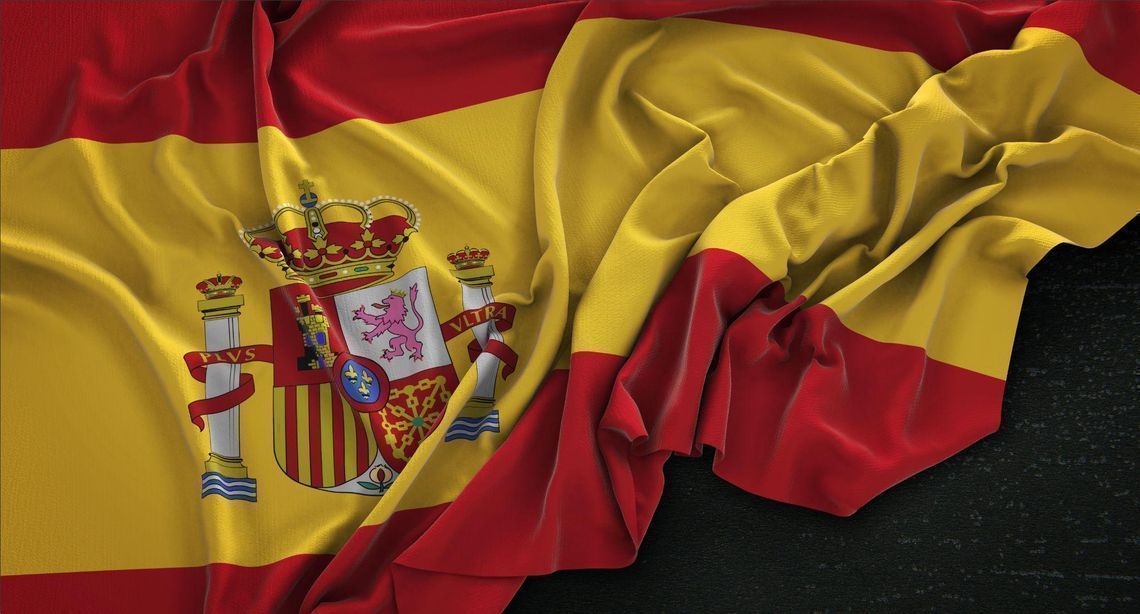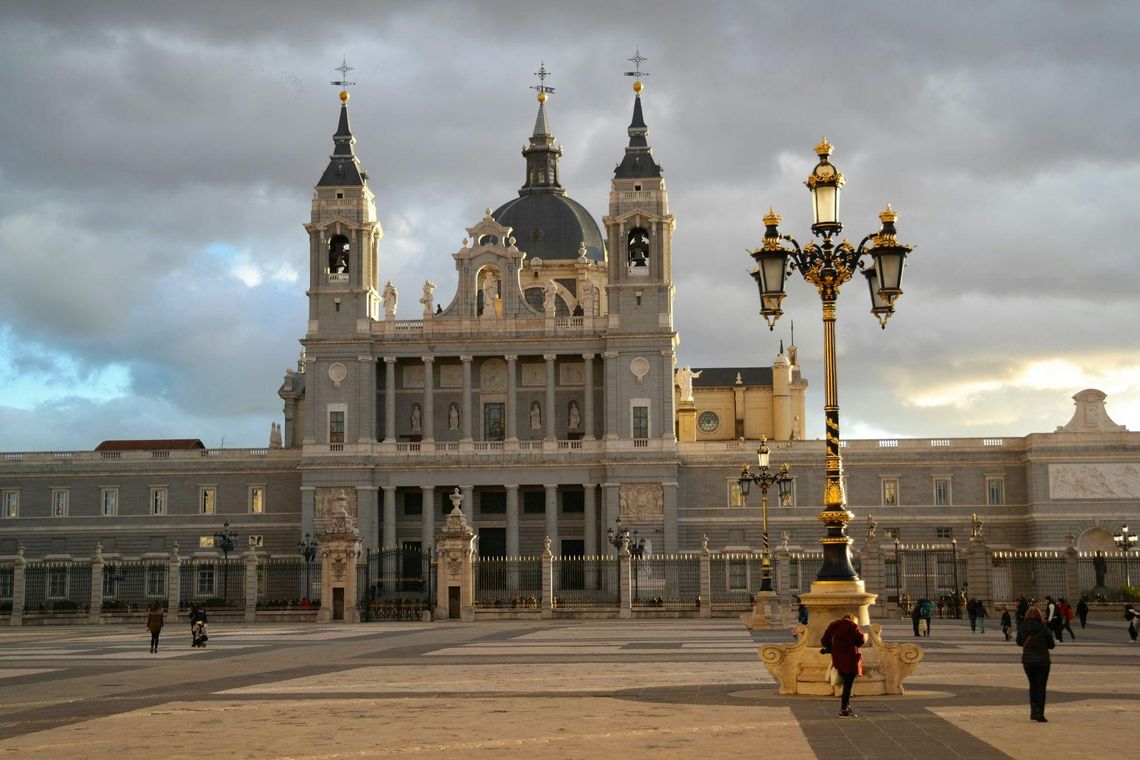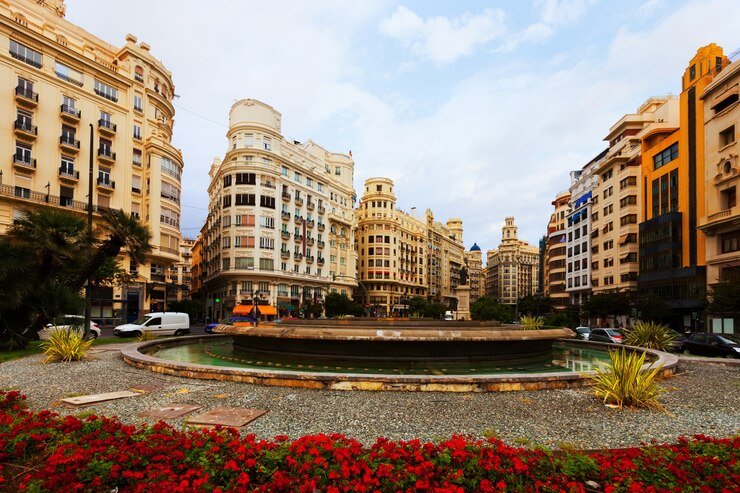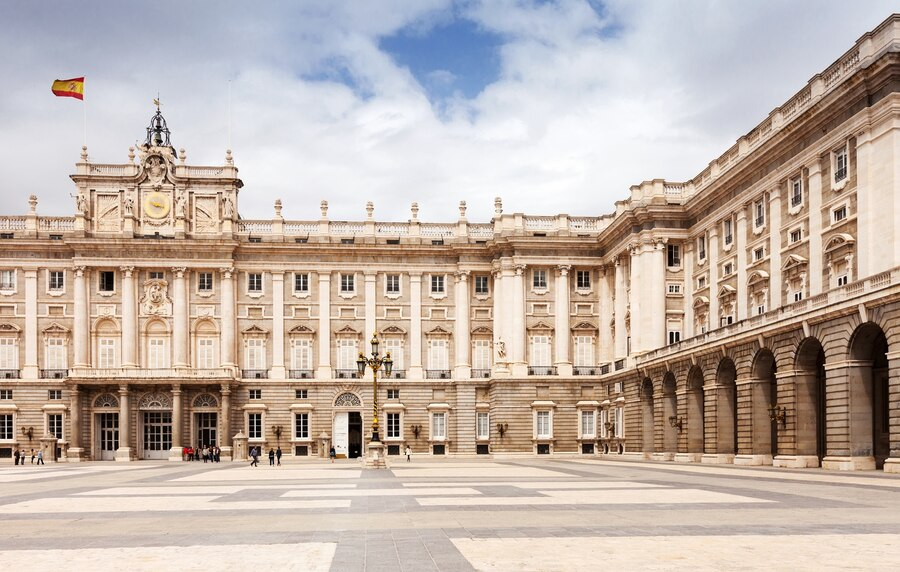Evening coursesGeneral
- Language
- Spanish
| Accommodation options | More about Barcelona |
|---|---|
| Room outside of centre | 559USD/month |
| Room in centre | 780USD/month |
| One bedroom outside of centre | 1,083USD/month |
| One bedroom in centre | 1,440USD/month |
Article score: 5 out of 5 (3 reviews)
¡Hola! Spanish courses in Spain: list of language schools, cost and admission process.
Free consultation





Spanish language courses attract students from all over the world, given that they combine work with pleasure — learn a language and relax on clean, sandy beaches washed by the waves of the Mediterranean Sea. Spanish is the second most popular language to learn in the world[1]. It is spoken by more than 500 million people in 21 countries. But it is Spain that offers the most correct and standard — the so-called Castilian — version of the language.
| Accommodation options | More about Barcelona |
|---|---|
| Room outside of centre | 559USD/month |
| Room in centre | 780USD/month |
| One bedroom outside of centre | 1,083USD/month |
| One bedroom in centre | 1,440USD/month |
| Accommodation options | More about Barcelona |
|---|---|
| Room outside of centre | 559USD/month |
| Room in centre | 780USD/month |
| One bedroom outside of centre | 1,083USD/month |
| One bedroom in centre | 1,440USD/month |
When applying for a language course, a lot of time is spent searching for information and clarifying the nuances of programs and accommodation options in Spain.
UniPage cooperates only with accredited language schools, which, in addition to quality education and comfortable accommodation, provide our clients with discounts on courses. Our experts will tell you in detail what programs are available at Spanish schools and universities, help you fill out an application, and save your time.
| Type of program | Intensity | Group | Min. language requirements | Cost per week |
|---|---|---|---|---|
| General Spanish | 15-20 | 6-10 | Beginner | 136 USD+ |
| Intensive course | 25-30 | 8-12 | Beginner | 247 USD+ |
| Super Intensive course | 30-35 | 8-12 | Beginner | 452 USD+ |
| Exam preparation (DELE/SIELE) | 20 | 8-10 | Elementary | 282 USD+/418 USD+ |
| University Pathway | 15-20 | 8-15 | Beginner | 7,074 USD/course |
| Private tuition | 1-10 | 1-2 | Beginner | 45 USD+/ |
| Study & Live in Your Teacher's Home | 15 | 1-2 | Beginner | 1,186 USD+ |
| Online | 1-2 | 1-3 | Beginner | 23 USD+/lesson |
| Spanish for Business | 25 | 8-10 | Intermediate | 294 USD+ |
| Teacher training | 20-30 | 5-10 | Upper-Intermediate | 390 USD+ |
| Summer camp | 20 | 8-10 | Beginner | 339 USD+ |
General Spanish. A standard course with a workload of 20 hours a week, the main task of which is to improve the level of the language. Evening classes are also available for 1.5-3 hours per week.
Intensive course. There are different durations. An average of 25-30 hours per week, these courses include 1 to 5 conversation and individual lessons. Depending on the number of additional lessons, courses are divided into Intensive, Intensive plus and Super Intensive.
Exam preparation. These courses are aimed at preparing foreigners for the international DELE and SIELE language exams, which are necessary for admission to Spanish-speaking universities and employment in Spain. They include 20 hours of lessons and 5 individual classes per week.
University Pathway. These are preparatory courses for admission to Spanish universities. Private language schools offer this option to students with a minimum level or even zero proficiency of the language, provided that they take intensive courses before starting the Pathway. The programs run from September to May. In the classroom, students learn the language and prepare for entrance examinations to universities. Also, private schools help students with homologation — the recognition of a foreign diploma and certificate.
Private tuition. These are individual lessons with a teacher that correspond to specific needs or aspects of the language that the student wants to master. Individual lessons can be taken in person or online, and the student can independently choose the intensity — from 1 to 10 lessons per week. During the course, the student receives personal recommendations and feedback from the teacher.
Spanish for Business. These classes are aimed at learning the principles of business communication in Spanish. Business Spanish can be taken as an addition to intensive programs, or as a separate course of 20 hours + 5 individual lessons per week.
Study & Live in Your Teacher's Home. A special program that allows you to learn the language at the home of a teacher and immerse yourself in a friendly, homely Spanish atmosphere. It includes 15 hours of classes per week, accommodation, and extracurricular activities — visits to museums and parks, city tours, and trips to the beach.
Teacher training. Some language schools, such as Kingsbrook Idiomas and International House Valencia, offer practical training for foreigners who want to work as Spanish teachers. A minimum B2 (Upper-Intermediate) language level is required. In the classroom, students study the language in depth and obtain methods of teaching Spanish to foreigners.
Study and Work. Unpaid internships and volunteer programs are offered at partner companies of a school, which can be pursued in parallel with intensive language courses.
Summer camps are programs for teenagers from 14 to 17 years old. They allow you to fully immerse yourself in the Spanish environment, combine an academic program with sports, master classes, cultural programs, and excursions. Students study 20 hours a week in groups of 10 people. Extracurricular activities are held during lunch breaks, and one day a week is completely devoted to excursions. Schools provide study materials and award students with a certificate at the end of the course.
In addition to language schools, you can learn the language at Spanish universities. Some are only available to students who are already living in Spain on a student visa and want to improve their language level or prepare for language exams. Classes begin in September and end in December or May, depending on the specific program.
The curriculum of such courses includes lessons on grammar, vocabulary, and pronunciation. At the Autonomous University of Barcelona, courses are also taught in the Catalan dialect. Upon completion, a certificate is issued, which indicates the number of credits received during the course. They can be counted towards the total amount for undergraduate or graduate programs if the student decides to enroll in the university where the course was taken (or another university that counts ECTS).
The process of enrolling in language courses in Spain is quite simple: the student pays the registration fee, makes full or partial payment for the course, provides information about himself, receives an invitation from the school, and submits documents for a Spanish visa.
At private schools, unlike courses at universities, classes are conducted all year round. A student with any level of Spanish can enter a language school, having previously passed a specialized test to determine his group level. Students who already have some knowledge of the language can start studying every Monday, while a distinct schedule is established for beginners.
When applying, you should pay attention to the compliance of the school with state standards. If the center does not have any accreditation, you may be denied a visa. You should also be careful with Study and Work programs. With a student visa to Spain, it is forbidden to work. However, you are allowed to do unpaid internships and participate in volunteer programs. When submitting documents, it is necessary to check that this information is clearly indicated in the content of the school’s curriculum.
In case of a visa refusal, schools return the full cost of education. It is necessary to carefully read the clauses of the agreement governing the return and retention of funds in case of cancellation or rescheduling of courses at the student’s initiative.
The course curriculum largely depends on the school. At university centers, courses are aimed exclusively at learning the language or preparing for language exams.
At private schools, the curriculum is designed in such a way that students can immerse themselves in learning the language and getting to know the culture of Spain. In addition to the language course itself, electives can be included in the program, where you can improve your pronunciation, work out grammatical structures in more detail, or study the cultural characteristics of Spanish-speaking countries.
Many private language schools allow the student to independently choose the duration of the course. As a rule, they use a communicative approach, when students spend most of the lesson communicating. Classes are held in small groups of 5-10 people. Also, some programs include individual lessons, during which you will study one-on-one with a teacher. This helps to better work through points that cause difficulties, or focus on topics of particular interest.
Often, private language schools in Spain offer students a variety of courses that allow you to combine language learning with relaxation and a variety of extracurricular activities. They are included in the compulsory program of the course and are included in the daily schedule of students. For example, you can go diving in Tenerife, hone your tennis skills at professional courts in Marbella, or get acquainted with national Spanish cuisine in Barcelona.
| Accommodation options | Meals | Number of people per room | Min. cost per week | Avg. cost per week |
|---|---|---|---|---|
| Host family | Full board or half board | 1-2 | 198 USD | 231 USD |
| Student residence | Optional | 1-2 | 158 USD | 321 USD |
| Apartment | Covered by the student | 1-4 | 107 USD | 172 USD |
| Hotel | Optional | 1-2 | 50 USD/day | 93 USD/day |
| Expenses | Min. | Avg. |
|---|---|---|
| Consular fee | 40 USD | 68 USD |
| Medical insurance | 12 USD/week | 17 USD/week |
| Study materials | 24 USD | 27 USD |
| Airport transfers | 45 USD | 71 USD |
Check the website of the school for additional costs.
| Service | Cost |
|---|---|
| Complete guidance in registering for courses — language schools abroad | 38,000 ₽ |
| Complete guidance in the admission process — university language courses | from 75,000 ₽ |
| Visa guidance | 69,000 ₽ |
To take short-term language programs for up to 90 days, it is enough to apply for a category C Schengen visa. The application and other documents must be submitted to the authorized Spanish visa center, having previously made an appointment online through the official website. The term for consideration is 5-10 working days, but in special cases, it can take up to 30 calendar days.
For Spanish courses over 90 days long, a foreign student will need to apply for a national visa. The application is considered by the department of the region in which the student plans to study. Therefore, documents should be submitted no later than 30 days before the intended visit to Spain. The consulate may request the personal presence of the applicant and conduct an interview with him.
In Spain, foreign students are not allowed to combine study and work. This restriction should not be taken too personally, as it is an opportunity to fully focus on learning Spanish without wasting time looking for part-time jobs.
At the same time, you still have the opportunity to gain professional experience at a European company while taking a language course. Some schools in Spain, such as Españolé International House Valencia, offer Study and Work programs. These are unpaid internships and volunteering opportunities that you can choose in addition to your main language course.
| Program | Duration | Min. language level | Cost |
|---|---|---|---|
| Internship | 12 | Intermediate | 621 USD |
| Volunteering | 4 | Beginner | 621 USD |
| Demipair | 12-36 | Beginner | 2,802 USD |
Españolé is accredited by the prestigious association of the International House language centers, which also includes language schools in the UK, Portugal, Denmark, and other countries. The school is located in the historic center of Valencia and meets the high standards of education adopted by IH.
There are programs for all levels of language proficiency — from intensive courses of various durations to special programs for exam preparation and enrollment to Spanish universities. The curriculum includes elective classes in pronunciation, grammar, and cultural characteristics of Spanish-speaking countries. The school also offers students a combination of language learning and extracurricular activities — sailing or master classes in cooking Spanish dishes. The minimum age of students is 16 years old, while summer language camps accept students that are 14 or older.
Courses last from 1 week to 9 months. Depending on the intensity and duration, the price varies from 195 USD to 463 USD per week, which includes electives and all study materials. Extracurricular activities will cost an additional 102 USD per week.
The Taronja language school is located in Valencia. In 2010, it joined the worldwide IALC association and received accreditation.
Taronja offers courses ranging from 1 to 36 weeks, DELE/SIELE exam preparation programs, online courses, and conversation clubs for all language levels. The only restriction is that you must be 18 or older.
The priority of the school is social and cultural integration. Therefore, in addition to Spanish lessons, Taronja conducts a variety of extracurricular activities for its students — water sports, tennis, Spanish guitar, and salsa lessons. There is a minimum of 5 such classes per week.
The cost of the courses is from 195 to 564 USD per week, and the registration fee is 56 USD. For B2 and C1 level courses, additional study materials must be purchased for 27 USD. Extracurricular activities cost an average of 68 USD per lesson.
The Kingsbrook Idiomas private language center is located in the capital of Catalonia — Barcelona. The school offers a wide range of courses for any level and purpose of study, including preparation for language exams or a teaching career. Kingsbrook Idiomas is one of the most popular language schools in Spain. Every year, it is chosen by students from 45 countries of the world. The school is accredited by the Instituto Cervantes, an organization established by the Spanish government to promote the study of the Spanish language and culture. Kingsbrook is a multilingual school where you can learn not only Spanish, but also English, German, French, and other languages.
The average cost of the course is 169 USD per week, and the fee for registration and textbooks is 34-169 USD depending on the length of the course. The price includes extracurricular activities — dancing, football, cooking classes, trips out of town, and walks through the streets of Barcelona, during which teachers talk about history, culture, and traditions in Spanish. In addition, students themselves organize conversational clubs.

| Population | 1.7 million people |
| Average cost of living | 680 USD/month |
| Dialects | Catalonian |

| Population | 1.6 million people |
| Average cost of living | 793 USD/month |
| Dialects | Catalonian |

| Population | 3.2 million people |
| Average cost of living | 772 USD/month |
| Dialects | Catalonian, Galician, Basque |
60+ countries
we work with
$1,000,000 saved
by students through scholarships
6,400 offers
our students got